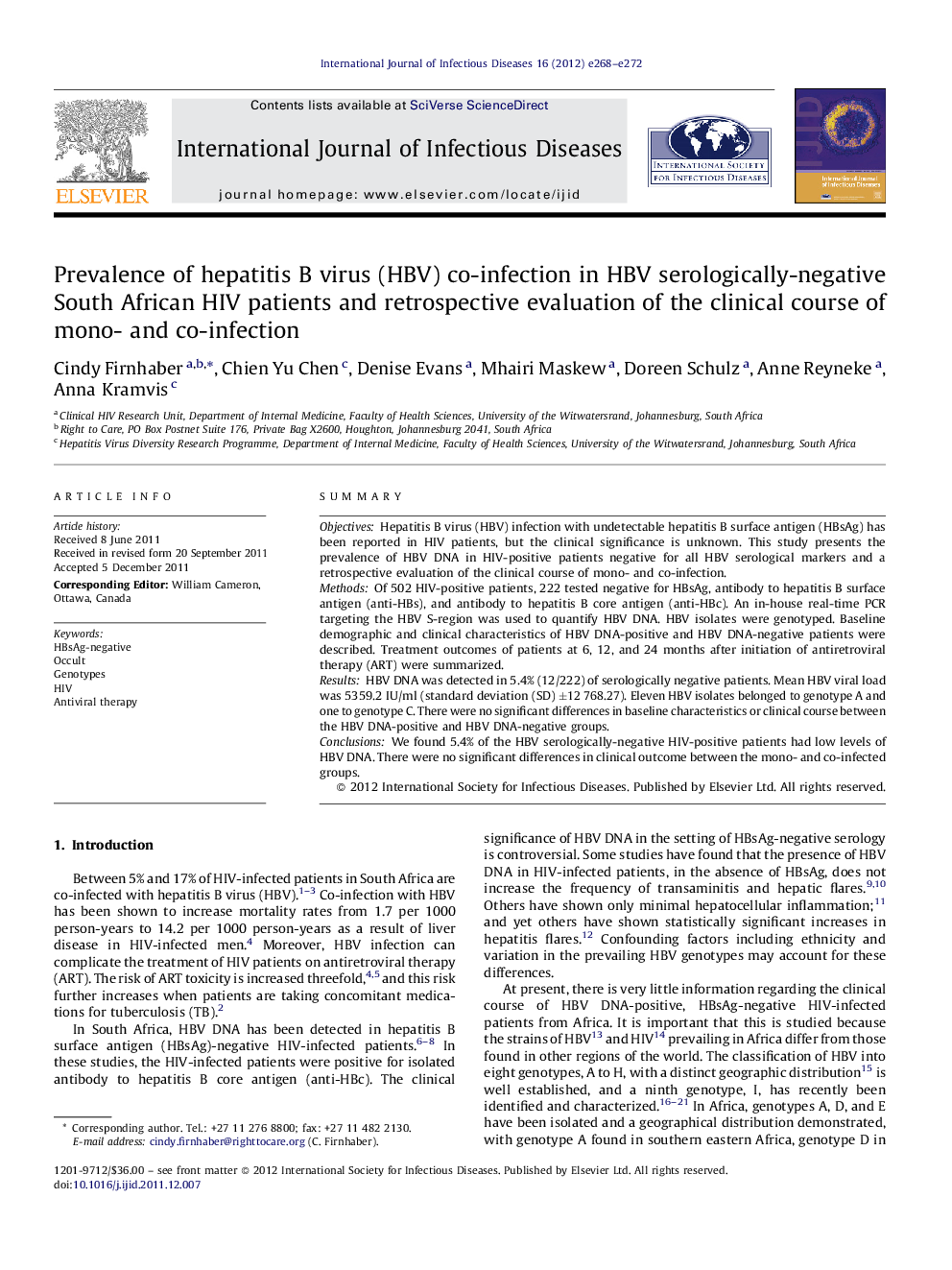| Article ID | Journal | Published Year | Pages | File Type |
|---|---|---|---|---|
| 3363126 | International Journal of Infectious Diseases | 2012 | 5 Pages |
SummaryObjectivesHepatitis B virus (HBV) infection with undetectable hepatitis B surface antigen (HBsAg) has been reported in HIV patients, but the clinical significance is unknown. This study presents the prevalence of HBV DNA in HIV-positive patients negative for all HBV serological markers and a retrospective evaluation of the clinical course of mono- and co-infection.MethodsOf 502 HIV-positive patients, 222 tested negative for HBsAg, antibody to hepatitis B surface antigen (anti-HBs), and antibody to hepatitis B core antigen (anti-HBc). An in-house real-time PCR targeting the HBV S-region was used to quantify HBV DNA. HBV isolates were genotyped. Baseline demographic and clinical characteristics of HBV DNA-positive and HBV DNA-negative patients were described. Treatment outcomes of patients at 6, 12, and 24 months after initiation of antiretroviral therapy (ART) were summarized.ResultsHBV DNA was detected in 5.4% (12/222) of serologically negative patients. Mean HBV viral load was 5359.2 IU/ml (standard deviation (SD) ±12 768.27). Eleven HBV isolates belonged to genotype A and one to genotype C. There were no significant differences in baseline characteristics or clinical course between the HBV DNA-positive and HBV DNA-negative groups.ConclusionsWe found 5.4% of the HBV serologically-negative HIV-positive patients had low levels of HBV DNA. There were no significant differences in clinical outcome between the mono- and co-infected groups.
